
A Midsummer Night's Dream is a comedy play written by William Shakespeare in about 1595 or 1596. The play is set in Athens, and consists of several subplots that revolve around the marriage of Theseus and Hippolyta. One subplot involves a conflict among four Athenian lovers. Another follows a group of six amateur actors rehearsing the play which they are to perform before the wedding. Both groups find themselves in a forest inhabited by fairies who manipulate the humans and are engaged in their own domestic intrigue. A Midsummer Night's Dream is one of Shakespeare's most popular and widely performed plays.

Puck, or Robin Goodfellow, is a character in William Shakespeare's play, A Midsummer Night's Dream.

The mechanicals are six characters in A Midsummer Night's Dream who perform the play-within-a-play Pyramus and Thisbe. They are a group of amateur and mostly incompetent actors from around Athens, looking to make names for themselves by having their production chosen among several acts as the courtly entertainment for the royal wedding party of Theseus and Hippolyta. The servant-spirit Puck describes them as "rude mechanicals" in Act III, Scene 2 of the play, in reference to their occupations as skilled manual laborers.
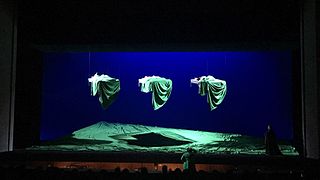
A Midsummer Night's Dream, Op. 64, is an opera with music by Benjamin Britten and set to a libretto adapted by the composer and Peter Pears from William Shakespeare's play, A Midsummer Night's Dream. It was premiered on 11 June 1960 at the Aldeburgh Festival, conducted by the composer and with set and costume designs by Carl Toms. Stylistically, the work is typical of Britten, with a highly individual sound-world – not strikingly dissonant or atonal, but replete with subtly atmospheric harmonies and tone painting. The role of Oberon was composed for the countertenor Alfred Deller. Atypically for Britten, the opera did not include a leading role for his partner Pears, who instead was given the comic drag role of Flute/Thisbe.
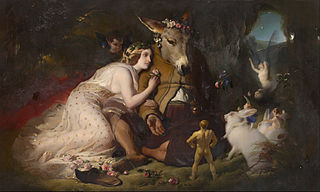
Nick Bottom is a character in Shakespeare's A Midsummer Night's Dream who provides comic relief throughout the play. A weaver by trade, he is famously known for getting his head transformed into that of a donkey by the elusive Puck. Bottom and Puck are the only two characters who converse with and progress the three central stories in the whole play. Puck is first introduced in the fairies' story and creates the drama of the lovers' story by messing up who loves whom, and places the donkey head on Bottom's in his story. Similarly, Bottom is performing in a play in his story intending it to be presented in the lovers' story, as well as interacting with Titania in the fairies' story.
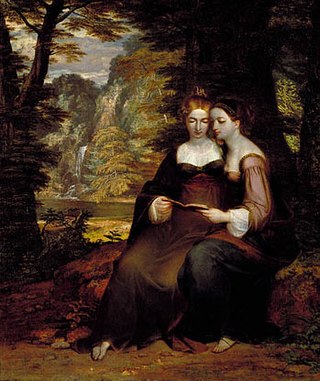
Helena is one of four young lovers – the others being Demetrius, Lysander, Hermia – featured in William Shakespeare's play A Midsummer Night's Dream.

Titania is a character in William Shakespeare's 1595–1596 play A Midsummer Night's Dream.
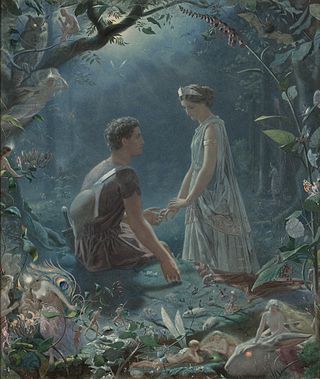
Hermia is a fictional character from Shakespeare's play, A Midsummer Night's Dream. She is a girl of ancient Athens named for Hermes, the Greek god of trade.
Philostrate is a fictional character in a number of literary works, including William Shakespeare's A Midsummer Night's Dream (1596). In that play, he is the Master of the Revels at Theseus' court, meaning he is in charge of his lord's entertainments, making recommendations to Theseus, as well as altering the text of some of the plays performed in his court. Shakespeare may have used this character to poke fun at play censorship in London at the time. In early performances of the play, the actor who played this character probably also played the part of Egeus, Hermia's strict father. There is only one scene in act V where both Egeus and Philostrate are present, and in this scene Egeus' character would have taken all of Philostrate's lines as his own.

A Midsummer Night's Dream is a 1968 British film of William Shakespeare's play A Midsummer Night's Dream, directed by Peter Hall.
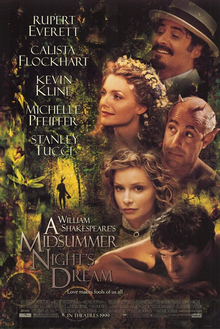
A Midsummer Night's Dream is a 1999 fantasy romantic comedy film written, produced, and directed by Michael Hoffman, based on the 1600 play of the same name by William Shakespeare. The ensemble cast features Kevin Kline as Bottom, Michelle Pfeiffer and Rupert Everett as Titania and Oberon, Stanley Tucci as Puck, and Calista Flockhart, Anna Friel, Christian Bale, and Dominic West as the four lovers.
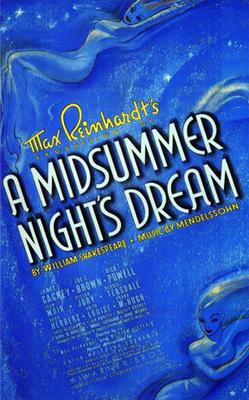
A Midsummer Night's Dream is a 1935 American film adaptation of the Shakespearean play of the same name. It is directed by Max Reinhardt and William Dieterle, produced by Warner Bros., and stars James Cagney, Mickey Rooney, Olivia de Havilland, Jean Muir, Joe E. Brown, Dick Powell, Ross Alexander, Anita Louise, Victor Jory and Ian Hunter. The screenplay, written by Charles Kenyon and Mary C. McCall Jr., is adapted from Reinhardt's Hollywood Bowl production of the play from the previous year.

A Midsummer Night's Dream is a 1909 American film directed by Charles Kent and J. Stuart Blackton, and starring Walter Ackerman and Charles Chapman. It was the first film adaptation of the eponymous play by William Shakespeare. The movie was made during summer 1909, but not released until December 25.
The Dream is a one-act ballet adapted from Shakespeare's A Midsummer Night's Dream, with choreography by Frederick Ashton to music by Mendelssohn arranged by John Lanchbery. It was premiered by The Royal Ballet at the Royal Opera House, Covent Garden on 2 April 1964 in a triple bill with Kenneth MacMillan's Images of Love and Robert Helpmann's Hamlet.

Wood Love is a 1925 German silent comedy film directed by Hans Neumann and starring Werner Krauss, Valeska Gert and Alexander Granach. It was an adaptation of William Shakespeare's A Midsummer Night's Dream.
The Dreaming is a 2001 musical written by Howard Goodall and Charles Hart, based on William Shakespeare's A Midsummer Night's Dream but reset in the Edwardian period.

Dream of a Summer Night is a 1983 Italian musical film written and directed by Gabriele Salvatores, at his directorial debut. Based on a rock musical directed by the same Salvatores, it is a musical adaptation of William Shakespeare's A Midsummer Night's Dream. It was screened in the "De Sica" section at the 40th edition of the Venice International Film Festival.

A Midsummer Night's Dream is a 2016 British television film based on the William Shakespeare play A Midsummer Night's Dream. It was adapted by Russell T Davies, directed by David Kerr and produced by Nikki Wilson. It stars Maxine Peake as Titania, Matt Lucas as Bottom, John Hannah as Theseus and Nonso Anozie as Oberon. The film was first broadcast on 30 May 2016 on BBC One.

A Midsummer Night's Dream is a 2017 film adaptation of the play A Midsummer Night's Dream by William Shakespeare. The film is a modern rendition that relocates the story from ancient Athens to present-day Los Angeles.

A Caribbean Dream is a 2017 romantic comedy, produced by Melissa Simmonds and Lynette Eastmond, directed by Shakirah Bourne. The adaptation of William Shakespeare's A Midsummer Night's Dream was conceptualised and cast by Melissa Simmonds and written by Shakirah Bourne. The film stars Aden Gillett as Theseus, Sonia Williams as Hippolyta, Susannah Harker as Titania and Adrian Green as Oberon with Lorna Gayle as Bottom. There is an extensive cast of both English and Barbadian actors, this re-imagined traditional tale takes a twist under the full moon, as many wonders occur during this fated Caribbean Festival.

















